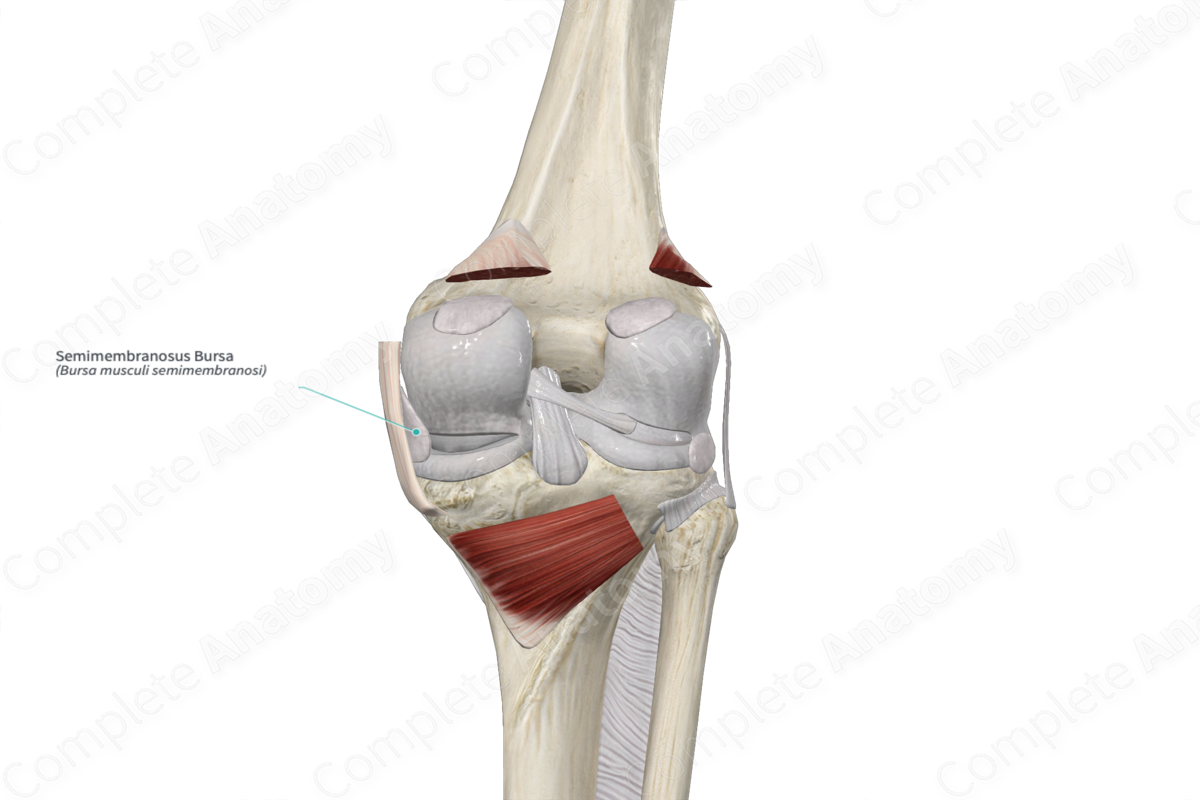
Structure
Bursae are sac-like structures, with an inner synovial membrane, that produces a thin film of synovial fluid. They aid in reducing friction between moving tissues of the body, such as between tendon and bone, ligament and bone, tendons and ligaments, and between muscles.
Inflammation of the bursa is known as bursitis. If the inflammation is due to injury or strain, it is known as aseptic bursitis. However, if the inflammation is caused by infection, it is known as septic bursitis.
Related parts of the anatomy
Anatomical Relations
The semimembranosus bursa is a closed sac of synovial fluid, located at the posteromedial aspect of the knee joint, deep to the tendon of the semimembranosus muscle.
It is invariably connected with the medial subtendinous bursa of the gastrocnemius muscle, therefore, forming a gastrocnemio-semimembranosus bursa. The bursa is invariably found in the sulcus formed by the muscle bellies of the semimembranosus and medial head of gastrocnemius (called sulcus popliteus medialis). Incomplete sagittal septa are frequently found within the gastrocnemio-semimembranosus bursa (Rauschning, 1979). The gastrocnemio-semimembranosus bursa is in communication with the knee joint cavity through a transverse slit in the joint capsule above and lateral to the medial femoral condyle, in the center of the popliteal fossa.
Function
The semimembranosus bursa reduces the friction of the semimembranosus muscle moving over the medial condyle of the femur and the joint capsule of the knee.
List of Clinical Correlates
—Popliteal cyst (Baker's cyst)
References
Rauschning, W. (1979) 'Popliteal cysts and their relation to the gastrocnemio-semimembranosus bursa. Studies on the surgical and functional anatomy', Acta Orthop Scand Suppl, 179, pp. 1-43.
Learn more about this topic from other Elsevier products




